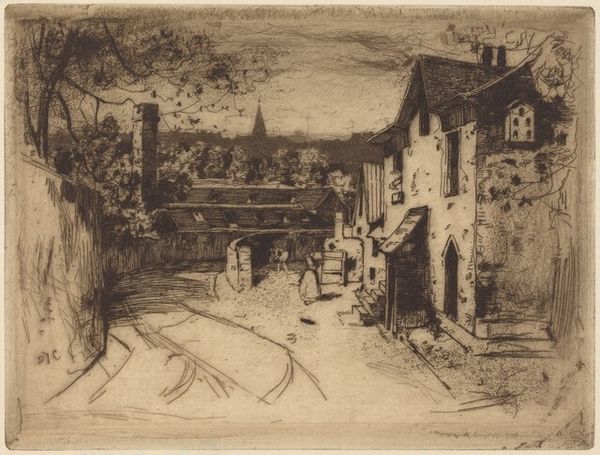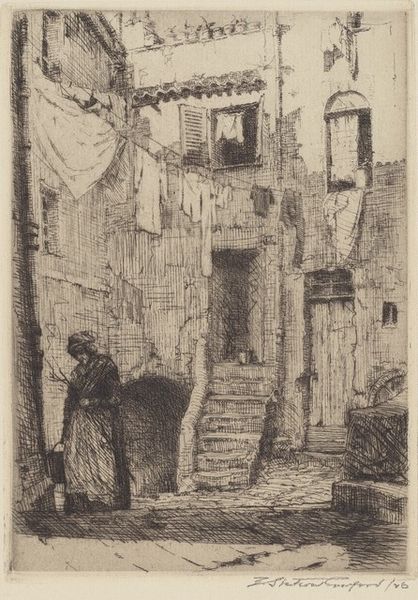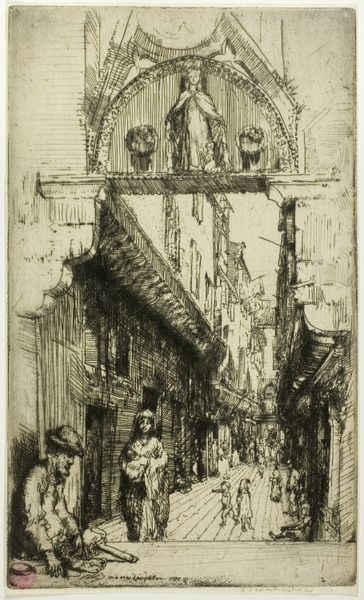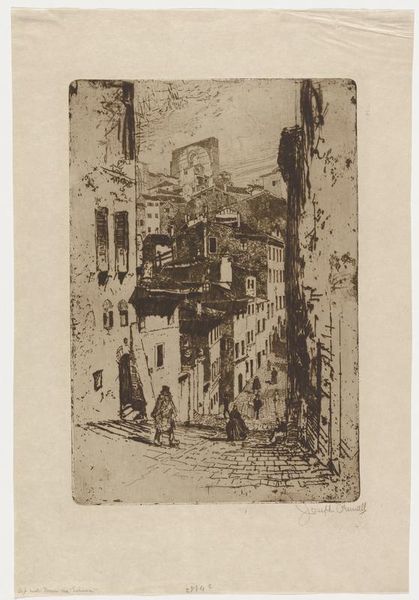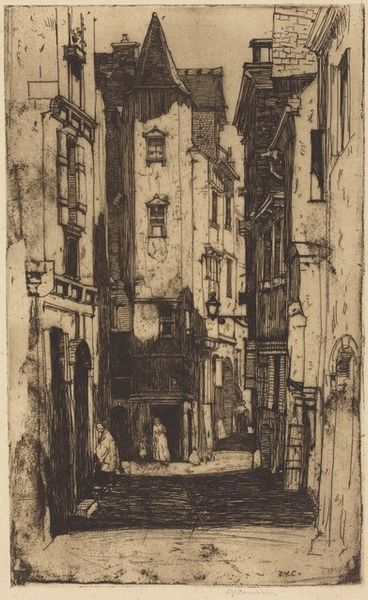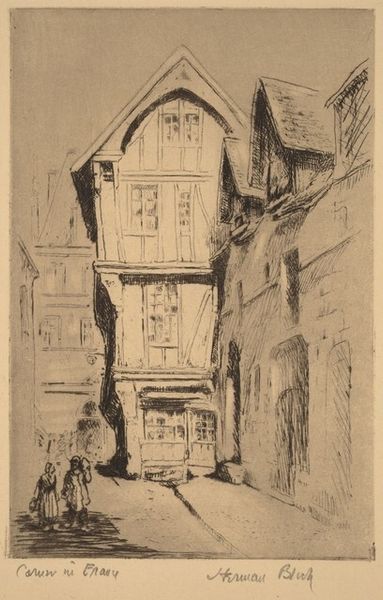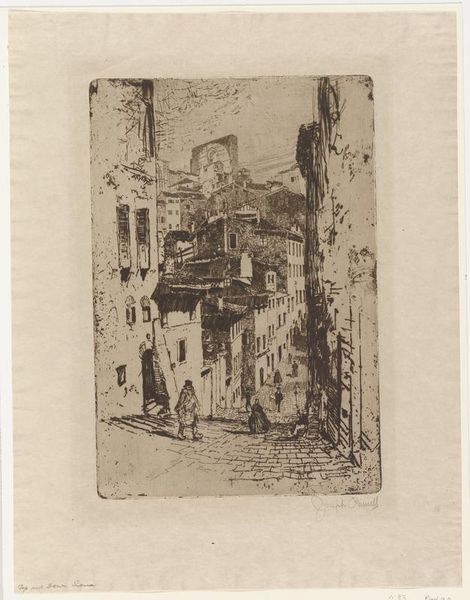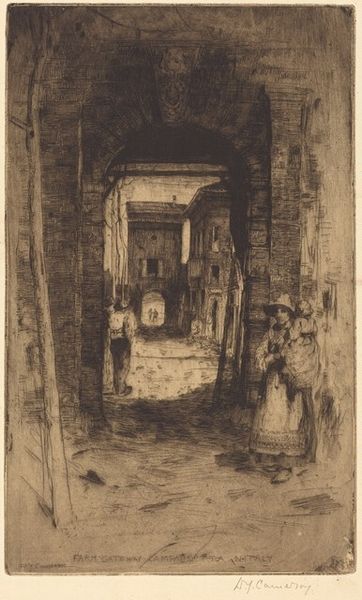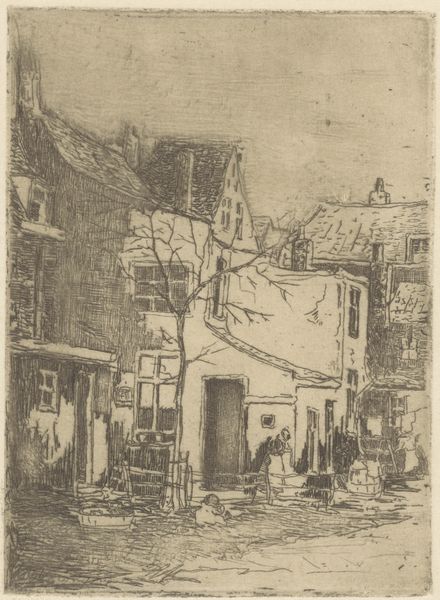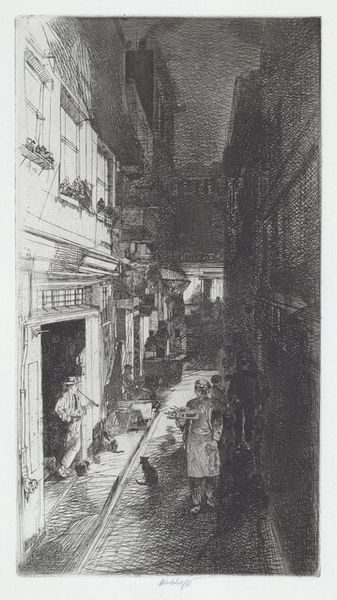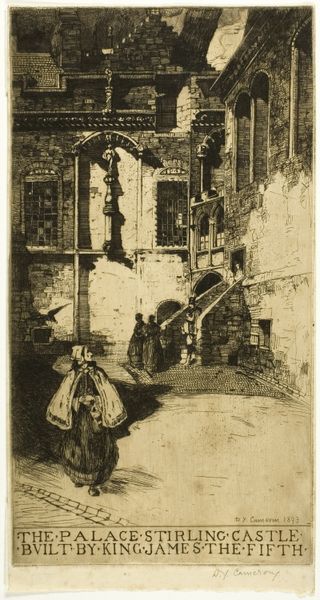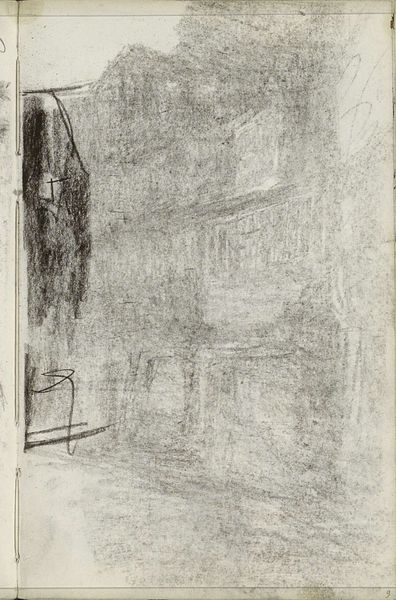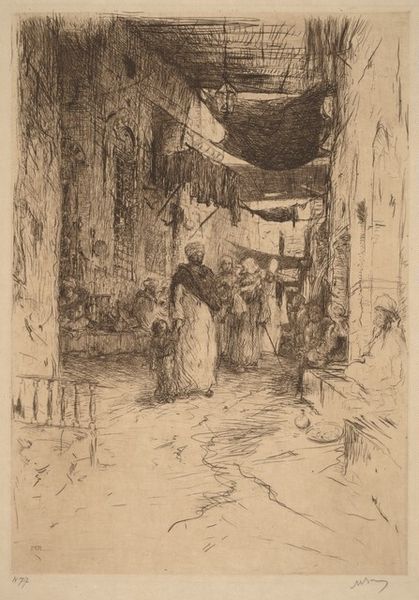
Copyright: National Gallery of Art: CC0 1.0
Editor: So, this etching is "Plumstone Close" by James McBey, dating from around 1904-1905. It gives the impression of a crowded, working-class urban space. I am curious to learn, what is your reading of this piece, considering its production as a print? Curator: As a print, "Plumstone Close" isn’t just an image; it is a multiple, a commodity reflecting McBey’s own social positioning and engagement with the art market. Consider the materiality – the copper plate, the acid, the press. How do these contribute to a narrative about labor and the accessibility of art in the early 20th century? Editor: That’s an interesting way to look at it. I hadn’t thought about the choice of printmaking as making the artwork accessible to a wider audience, like a democratization of art production. But then wouldn't this accessibility clash with Impressionism, normally regarded as high art? Curator: Precisely! And that tension is central to its meaning. While stylistically leaning towards Impressionism, which, due to the social capital involved in painting and connoisseurship, tended to have a more exclusive audience, etching provided an alternative avenue, one tied to craft and industry. McBey utilized an industrial method of art making, while maintaining a traditional style that alludes to high art and painting. Editor: So, by choosing printmaking, he’s commenting on the art market, but also on class and access? Curator: Exactly. The choice of etching – its production and distribution – becomes a statement in itself, about the democratization of art, or perhaps even the illusion of it, within the broader social fabric of the time. Are these depictions of labor about romanticising, or accurately recording life? It really does call upon a deep understanding of production practices in society. Editor: That's a perspective I wouldn't have considered. Now I understand the value in thinking about it less like an aesthetic depiction and more like a product with inherent social meaning. Curator: Indeed. Looking at the materials and methods involved transforms our interpretation entirely.
Comments
No comments
Be the first to comment and join the conversation on the ultimate creative platform.
